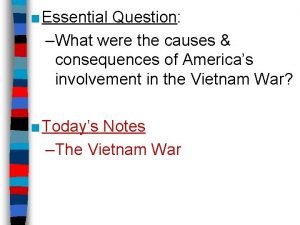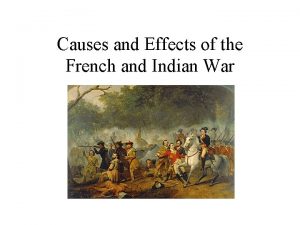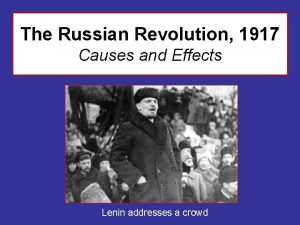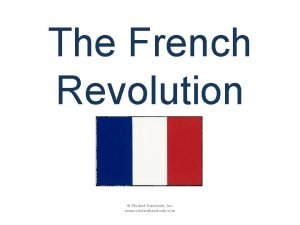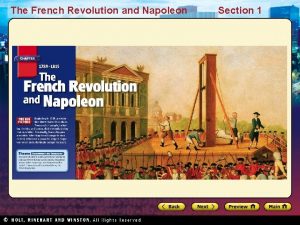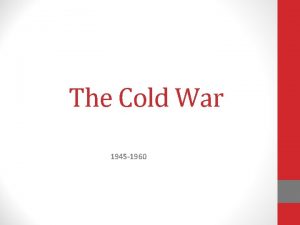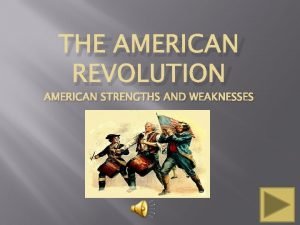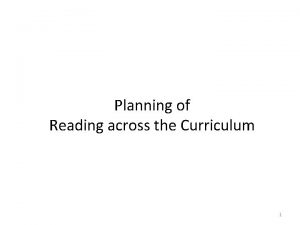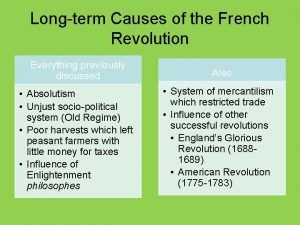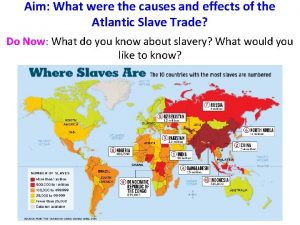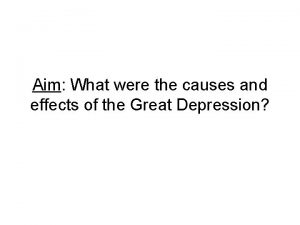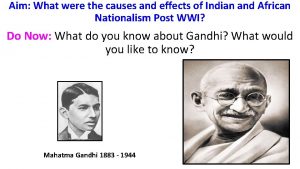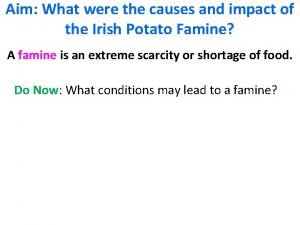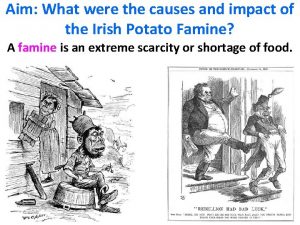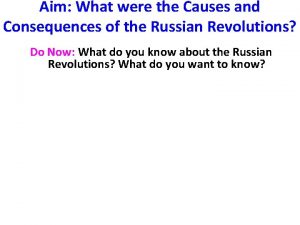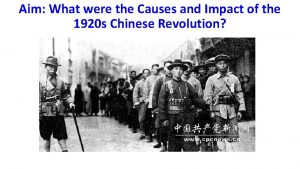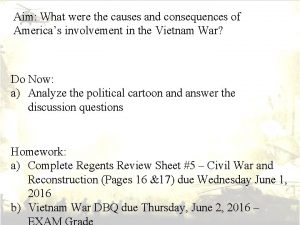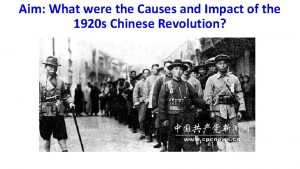Aim What were the causes and effects of













- Slides: 13

Aim: What were the causes and effects of the 1920 s Chinese Revolution? Do Now: You are a Chinese peasant in the 1920 s. Your country is ruled by a monarchy who has allowed foreign influence. You had lost the Opium Wars and Boxer Rebellion to the British. How do you feel about your government?

I Formation of the Chinese Republic A) The Qing Dynasty had been in power since 1644 Manchu Empress Dowager Cixi (1835 -1908) ruled the Qing Dynasty 1861 -1908. Puyi (1906 – 1967) became the last Chinese emperor at the age of 2 in 1908.

The Last Emperor, Puyi was the last emperor three times, but was not in power even for a day! Enthronement 1: From 1908 to 1912 was his first "reign", over the Qing Dynasty. His father Zaifeng was actually in power. Enthronement 2: In 1917, Puyi was restored to the throne by the warlord Zhang Xun, a Qing Dynasty loyalist general. Lasted only 12 days. Enthronement 3: During 1934 to 1945, Japan made Puyi ruler of Manchukuo, a puppet state of the Empire of Japan.

Chinese Republic Continued… B) 1911 Manchu Dynasty is overthrown. C) Sun Yat-sen became president of the new Chinese Republic. üYat-sen also established the KMT in 1912 (the Chinese Nationalist Party). “An individual should not have too much freedom. A nation should have absolute freedom. ” - Sun Yat-Sen Beheaded Chinese Rebel Leaders, 1911

Sun Yat-Sen (1867 – 1925) Sun Yat-Sen was a nationalist revolutionary. He was troubled by the Qing’s resistance to reform and its lack of resistance to the West. In 1905 he headed The United League (a union of the major opponents of the Qing), based in Tokyo. Sun's "Three Principles of the People": üNationalism: End of the monarchy and international influence üDemocracy: A republican, elected form of government üPeople's livelihood: Widespread land reform. Oct 1911 an army unit mutinied in Wuchang, sparking a revolution. The catalyst was a Qing decision to nationalize two privately-owned railways in central China. Sun Yat-Sen was elected president of the new China Republic 1912.

II Yuan Shikai A) Yuan Shikai served as Prime Minister and head of the Qing army. February 1912 the mother of the last Chinese Emperor Puyi abdicated for the 6 year old, ending 2000 years of imperial rule. Sun Yat-Sen resigned the next day. Yuan Shikai became president of the Republic of China. B) In 1915, Yuan announced a new imperial dynasty, with himself as emperor. Opposition grew, and on March 22, 1916, he was forced to abdicate, restoring republican rule in China. Yuan Shikai

III China and WWI A) 1917 China declared war on Germany B) China believed by fighting for the allies that at the end of the war, Chinese territories controlled by Germany would be returned to the people of China. HOWEVER… C) The Treaty of Versailles gave Japan the former German territory in China. May 4 th Movement

May th 4 , 1919: May th 4 Movement The Treaty of Versailles gave Japan former German territory in China. 5, 000 students from Peking University demonstrated May 4 th Movement. It became a national movement in China.

IV The Chinese Communist Party (CCP) was founded in 1921. Mao Zedong was an early member. It was born out Marxism. (Chinese peasants believed Marxism would help them rise out of poverty) Mao Zedong

V Chiang Kai-Shek A) 1925 Chiang Kai-shek became the leader of the KMT following Sun Yat- Sen. He expelled the Communists. “War is not only a matter of equipment, artillery, group troops or air force; it is largely a matter of spirit, or morale. ”

Chiang Kai-Shek Continued… B) Chiang Kai-shek established the Nationalist Republic of China and became its president in 1928. The US supported him (as he was anti. Communist) C) The KMT's "New Life" movement combined Confucian and Fascist ideas. D) The KMT ignored the peasants. Rise of Mao Zedong


Key Vocabulary China's Communist Party Empress Dowager Cixi Kuomintang Manchuria Mao Zedong New Life Movement Puyi Sun Yat-sen Yuan Shikai
 Causes of the persian war
Causes of the persian war What were the causes and effects of the vietnam war
What were the causes and effects of the vietnam war Causes and effects of the french and indian war
Causes and effects of the french and indian war Causes and effects of the russian revolution
Causes and effects of the russian revolution Causes and effects of french revolution
Causes and effects of french revolution Causes and effects of the french revolution
Causes and effects of the french revolution Causes and effects of french revolution
Causes and effects of french revolution Summary of cold war
Summary of cold war American revolution strengths and weaknesses
American revolution strengths and weaknesses French revolution causes and effects
French revolution causes and effects Pollution causes effects and solutions
Pollution causes effects and solutions French revolution causes and effects
French revolution causes and effects Pollution causes effects and solutions
Pollution causes effects and solutions Long term causes french revolution
Long term causes french revolution

